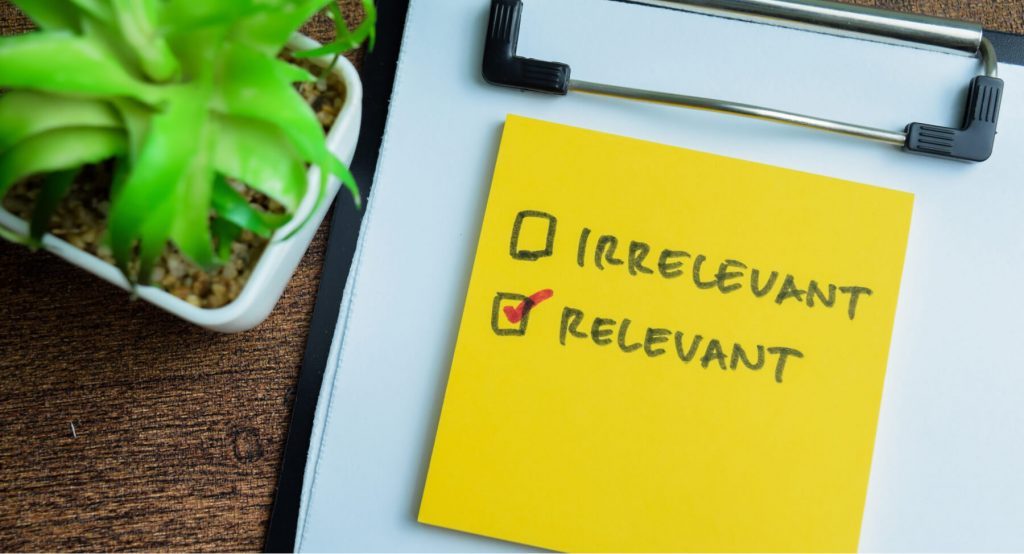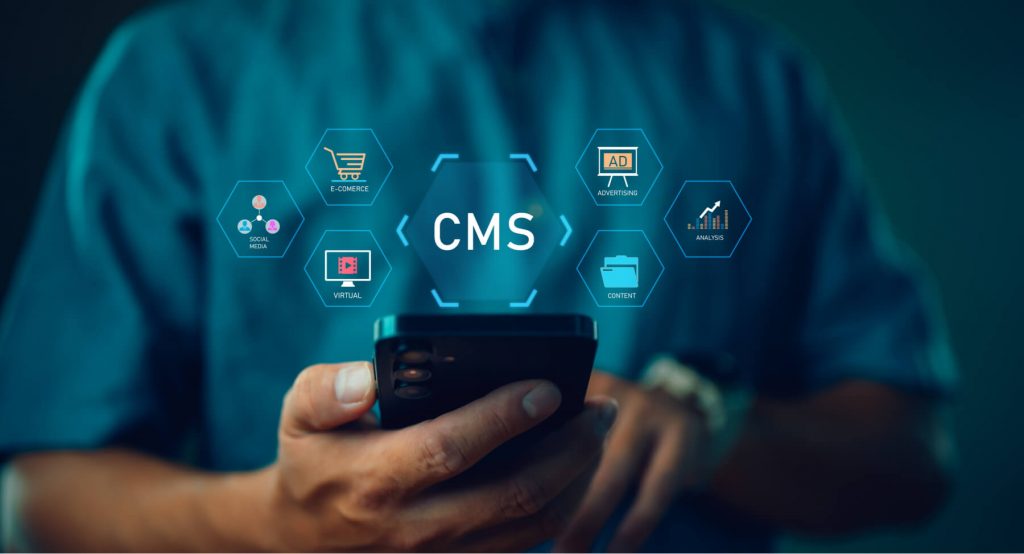The Internet is a global network and a vital marketing tool, a large advertising platform, and an opportunity to maintain document flow work and find contacts in the regions. There is an opinion that it is enough to create a company website, and the profit will come by itself. However, the famous “First we build, then we think” approach to creating many self-made websites makes it hard for business owners to fully appreciate the “all in one” tool that is a company website. In particular, for an SMB market segment. This article will be helpful to those who:
- Selects contractors for the creation of a website but does not understand how to approach the market;
- Wants to think over the project competently before launching it;
- Already has a website but is not satisfied with its performance, traffic, or conversion.
Let’s say right away: this article is not for those who need the most “easy-baked” website created in the shortest possible time, just to indicate its address in an advertising brochure.
Risk #1: Incorrect Goals

It all starts with a goal. Determine why you are creating a site and, if this is not just a site “for the show,” as it also happens, think about how you plan to attract users to it and generate income.
For example:
- I am creating a portal dedicated to the film industry. I plan to attract users from search engines and social networks, earn income through advertising on the portal.
- I am creating an online clothing store. I plan to attract users to it from search engines, social networks, using contextual and native advertising from mailings.
- We create a company website for the presentation and sale of our services or products and increase trust in the company. We plan to attract users from search engines, using contextual advertising, from industry resources, through offline sources.
This step is essential and straightforward.
Risk #2: Incorrect Target Audience
Once you have decided on the goal, you must understand for whom the site is being created. A clear portrait of the target audience needs to be drawn up in detail and for a long time. Let’s agree that you know at least gender, age, values, factors influencing decision-making, and ways of performing the targeted action of your audience.
For example, like this: “Our audience is 70% of men between the ages of 18 and 25. They are impulsive. They want to perform the targeted action immediately without delving into the content. ” This data will be taken into account when developing landing pages from a marketing and design point of view.
A common mistake at this stage is to say that your site is for everyone.
Risk #3: Showing off Something that Users Don’t Want to See
On the site, the user must find answers to their questions. Suppose the site structure is created based on user demand, then in the future. In that case, there will be much fewer problems with search engine promotion and conversion. To create a structure for search demand, you need to find out how people form search queries related to your field of activity.
Example. You decided to develop a website dedicated to cinema, attract users to it and monetize it through advertising. What query templates will users be able to use to find this site?
- Movie title (future movie page)
- Collections by genre (future category page)
- Film selections by actors (films with DiCaprio)
- Film selections by director or screenwriter (Scorsese films)
- Selections by years, new items
- A selection of similar films
- Selections by duration (short films, TV series)
- Selections by topic
- Country selections
- Award-Winning Film Selections
- Reviews or ratings
- Selections by other parameters (color, voice acting, and others).
As a result, you should have a clear understanding of what types of pages will be on the site. Skipping this stage is like condemning yourself to drive without headlights on an unlit track. It is worth noting that going from big to small is more efficient at capturing all demand. For our example with cinema: for the initial query “film” or “movie,” a massive number of queries will be collected, grouping them, we get a complete picture of the subject, but this process will take a lot of resources.
Thinking through all the sections on your own, you can miss large thematic segments. Therefore, to make everything perfect and not miss anything, it is advisable to collect a complete collection of all requests – the site’s semantic core. Then clear the “garbage” group queries by Yandex or Google search results. As a result, get all kinds of query groups related to future pages of the site, that is, its complete structure.
Risk #4: Irrelevant content

A full-fledged site structure for search demand is only half the success. The rest depends on the correct content of the pages. How, at the stage of website design, what page content will be required, and in what volumes?
If the third step is successful, you understand page types (categories, articles, product cards, and so on). Suppose you have collected and designed a full-fledged semantic core. In that case, you already have an almost exact number and names of future pages of each type.
Now you need to analyze the actions of competitors for each type of page. It is important not to copy the competitors’ approach but to do better. Analysis of search results using the example of a cinema portal:
Enter a search query related to a specific type of page — for example, the category of films with an actor. Open several top results. Analyze the content of these sites: volume, themes, and the like. This data will be helpful in the future when creating prototypes. In the case of DiCaprio, for example, there should be his photograph, brief information, links to additional information.
And most importantly – an extensive list of films in which he starred and which he produced. In each block of the film, it is desirable to display the title, short description, year, genre, country of production, cast, and so on. This detailed analysis is performed for all types of pages. All data is recorded.
The presence of any block on the pages shown at the top does not mean that this block should be on your site. But for a successful start of the project, it is better to add these elements. Then, when the flow of users to the pages becomes stable, you can delete them. At this stage, we already understand what users want to see and what competitors are showing them.
Risk #5: Not Thinking Usability Through
Ease of use of the site is the most critical element that affects the success of the project. For the pages of the site to be practical and convenient, before working on the prototype of the page (or before choosing a template), you need to take into account the following few points.
Each page must fulfill its role, that is, encourage the user to take some action. You can not offer the user actions illogical or anticipatory events. For example, on product category pages, a user selects from a large number of positions. You need to give him a convenient and understandable filter, a short but succinct description of the goods. The user must ensure that the offer is profitable and take the main target action – put the product in the cart or buy one click. Each element of the targeted action (button, link, and others) should be noticeable.
Suppose the purpose of the page is to convey information. In that case, it is necessary to simply and clearly formulate an idea, invite the user to read additional information, comment on the article and share it with other users. The site should be easy to navigate. The user must understand which page he is on and how to get to different sections. The fields in the application forms should contain hints on filling out and highlighting the mistakes made. The usability checklist contains many more points that you need to pay attention to when developing an interface, which I will describe below.
Risk #6: Terms of Reference

It is better to trust the development side of preparing the final technical task. Still, in any case, it should contain a clear description of future pages and site functionality. A flaw in the technical task will significantly spoil the lives of both the performers and you. It will drag out the development process due to the many edits.
At the stage of creating a website, several technical solutions should be foreseen to avoid alterations in the further promotion of the website. This is what the terms of reference should contain. It should include a detailed description of the main parameters of the site: the size of the content area, colors, essential elements, and wishes.
Built-in SEO settings should have correct server settings (to avoid future duplicates), connected, links, the ability to prescribe unique title, description, keywords, and h1 for each static page, correct settings for compiling and updating an XML sitemap, pagination settings, menus, etc. navigation on regular links, not script. And about 30 more points.
Risk # 6,5: Not Thinking Adaptability Through.
You need to make an important choice: create a website from scratch or choose and refine a template. For most businesses, finding a good template and refining it are more costly than building a website from scratch. But in the case of, for example, online stores, you can buy a high-quality template and work on its basis, saving money at the design stage.
Pros and cons of templates – this is a topic for a separate publication. For now, let’s stop at the fact that we do not use template solutions but make a unique, thoughtful site. Therefore, the following parameters must be included in terms of reference.
- Prototypes of each page with detailed descriptions of each element.
- A detailed description of the operation algorithm of each dynamic element.
- A detailed description of the functionality.
A prototype is a schematic representation of a website page. There are many programs and services for prototyping. Many of them allow you to create schematic images of pages and customize links between pages, show various page elements in action, and so on. In addition to prototypes and when writing a description of functionality, it is imperative to describe how each element works (with examples).
Risk #7: Design

When choosing a designer or evaluating a company’s portfolio that provides a comprehensive website development service, you need to remember the main thing: the design should not be visible, but the site should differ from template solutions, not only by the logo.
These should be elements that emphasize the theme. The designer must dive into the sphere, identify thematic associations and translate them into the site. An example of an area about a movie: draw popcorn in the “basement” of the site.
How to distinguish template design from unique design? Imagine if the site will look adequate if you change the current owners to a company with a completely different subject matter. If yes – this is a template. If not – the design is thought out.
Unique designs or themed elements are not always appropriate. Sometimes you can get by with one logo, and sometimes you need something straightforward. But it’s better to move away from the template.
Now it is essential to work out the design of pages of all versions. For smartphones, tablets, and desktops. Better if there are no drastically different visual elements between versions. This will optimize the work of the site and allow users to navigate freely in it, entering from various devices.
When ordering a design from a private specialist or from a studio as part of the implementation of the entire project, you must agree in advance that at the end of the design stage, you will receive layouts for all major types of devices.
Risk #8: Layout
The layout is the process of translating a graphic image into code. It can be combined with programming, but there are many technical aspects at this stage. I’ll tell you what an ordinary person needs to pay attention to when accepting layout work.
The site opens correctly from a smartphone, tablet, desktop computer for you and your colleagues or friends. Correct, that is, everything is the same as in the layouts from the designer (fonts, distances between elements, colors, quality of icons and pictures, ratio of components, and so on).
- The site opens correctly in all popular browsers: Chrome, Safari, Yandex Browser, Mozilla, Opera, Bing.
- CSS and scripts are moved to separate files.
- The site opens quickly. To check, you can use the Google Page Speed Insights service, but do not forget that the site is on a test server. The loading speed indicators can be significantly underestimated.
Move on only after the layout is identical to the layouts from the designer and the site opens quickly.
Risk #9: Choosing the wrong CMS

CMS is a content management system. It will be used to fill and edit the site’s content, manage orders, and so on. The choice of CMS should be considered carefully. Choose a secure CMS with the ability to purchase a license and technical support. This is especially true when a payment system is tied to the site, integration with accounting and customer databases is configured.
Don’t use self-written solutions. If you ever give up the services of the site creators, then no one wants to dig into the homemade code. And if you and the new development team do not transfer the site to the CMS, you will get the same self-written version but also with crutches.
I hope you haven’t even thought about website builders or well-known solutions from the series “create a great website for 3900 rubles.” It will be possible to change only the text and pictures on it for free. And everything else (and this will be a lot if you need a high-quality website) – for a separate fee for each task. At the end of this stage, you should have a fully working site with a configured administration system. Everything should work as prescribed in terms of reference.
Risk #10: Not Thinking Content Through
Decide on the shore that fills the site. If you have 30 pages, there will be no serious problems, even if you find out that the site should have been filled in by yourself. Suppose you have 50 thousand products from seven different suppliers in your online store, which need to be collected in one catalog and set up export to the site, set up regular updates, and so on. In that case, it will be an unpleasant surprise to find out that all this is not provided and in general ” your managers should do it by hand. ” Even at the stage of preparation, decide who and in what way fills the site, how the information will be updated later. And don’t forget to optimize your pictures before uploading.
As well as with the content, decide at the beginning of what form you will receive the site. A reasonable solution would be to get a fully working website on your domain and hosting with customized feedback forms and mail, interactive maps, working modules, and connected statistics counters. And a guarantee for at least three months.
Afterword
Indeed, the development of an website takes time, and anyone from anywhere in the world can access the information located on it. As a result, the market volume for the development and support of such projects on the Internet is increasing from year to year. But you need to understand that website development, like the development of any IT project, requires careful planning. If the planning stage is not carried out efficiently enough, you can miss the key points that will affect the site’s functionality. It usually leads to the complete failure of the project. According to The Standish Group International,
- 52% of websites creation projects (in 2019) had problems during development, which affect the schedule, the budget, the scope, and the quality of the product;
- 19% of sites weren’t build at all;
- And only 29% were successful.
Thus, to minimize the risk of project failure, it is necessary to use the help of professionals. A high-quality web-development team allows you to identify risks at the inception stage, assess the possible consequences of their implementation, reject “unworkable” or unprofitable ideas at the initial stages, which allows you to reduce losses dozens of times.
